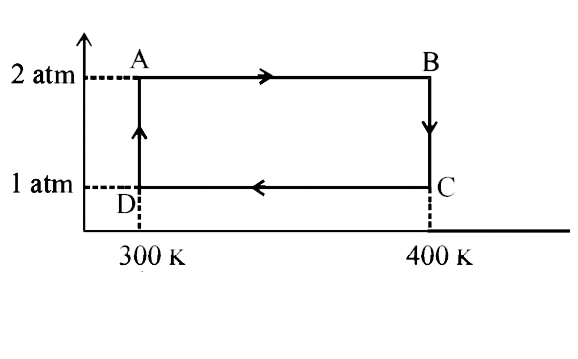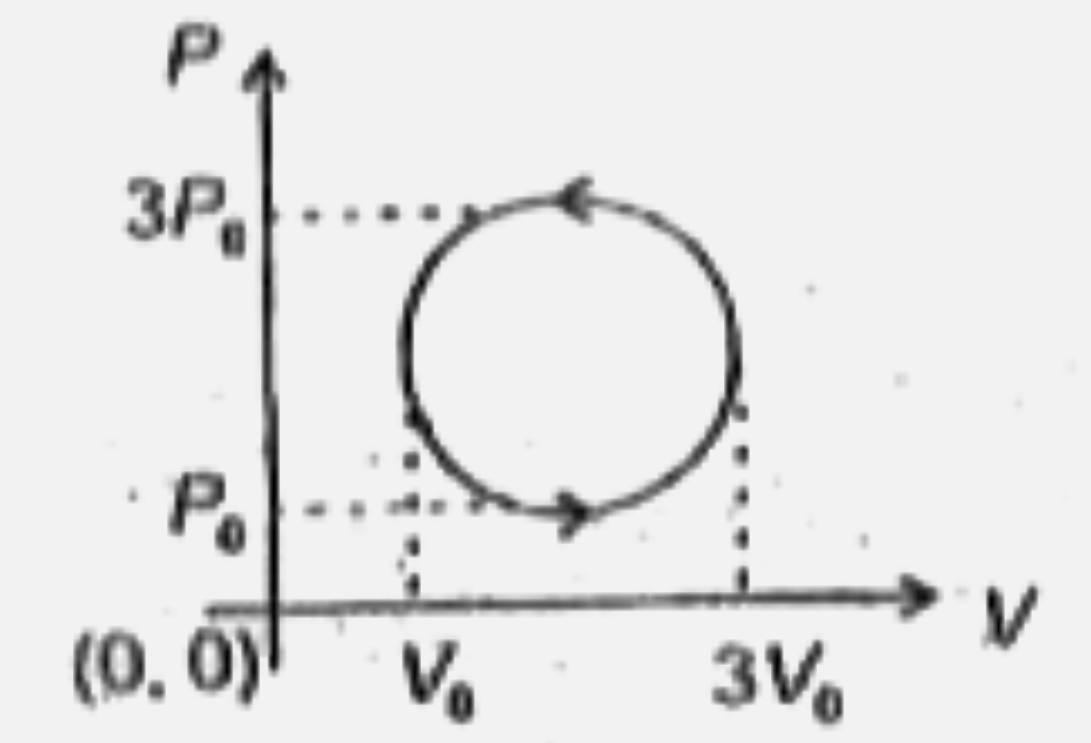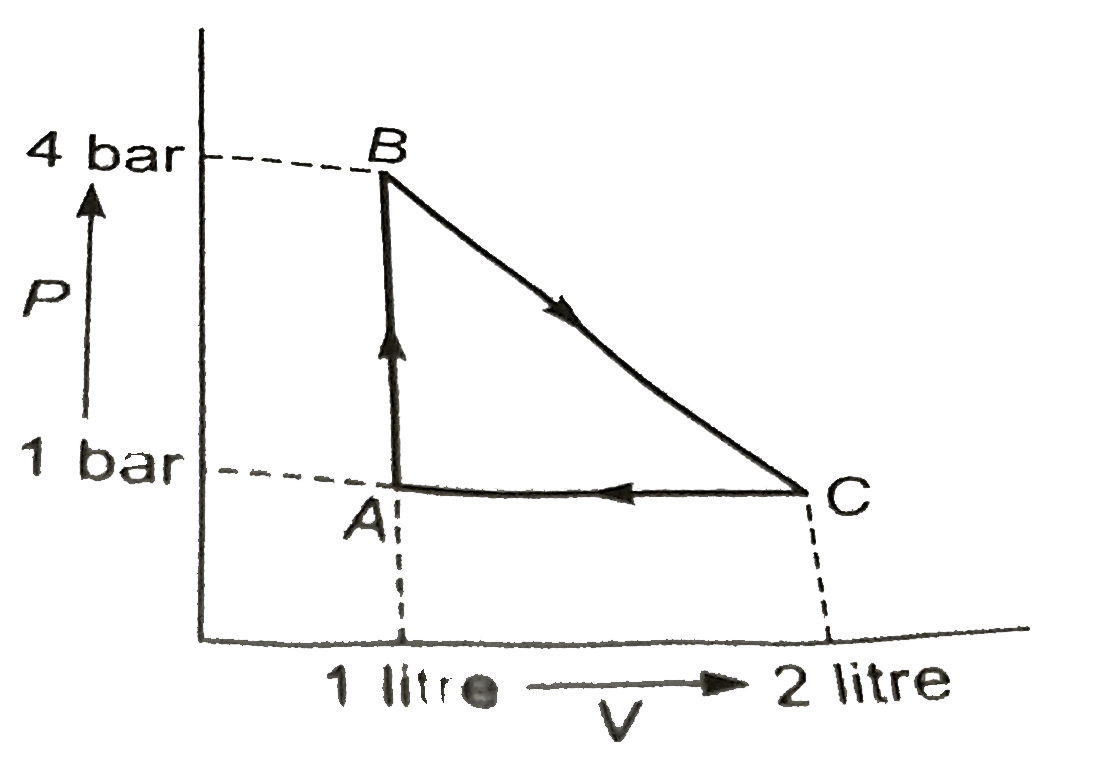Two moles of Helium gas undergo a reversible cyclic process as shown in figure. Assuming gas to be ideal, what is the net work involved in the cyclic process ?

200 Rln2
100 Rln2
300 Rln2
400 Rln2
The correct Answer is:A
At constant pressure
ΔW=PΔV
=P×(Vf−Vi)
For an ideal gas PV = nRT
or PVF=nRTfandPVi=nrTi
From (i)
∴ΔW=nR(Tf−Ti)
For constant temperature , PV =constatne
PfVf=PiVior((VfVi)=((PiPf)f
∴ΔW=nRTln(Pi)Pf
so work dine for path AB,BC,CD and DA respectively will be
ΔWAB=nR(Tf−Ti)=(2×R(400−300)=200R)
ΔWCD=nRTLn(Pi)PF=2×R×400ln2=800Rln2
ΔWCD=nR(Tf−Ti)=2×R[300−400]=−200R
ΔWDA=nRTln(PiPf=2×R×300ln(12)=−600Rln2
Hence the work done in the complete cycle
ΔW=WAB+WBC+WCD+WDA
=200R+800Rln2-200R-600Rln2=200Rln2

Topper's Solved these Questions
- THERMODYNAMICSBOOK - NCERT FINGERTPS ENGLISHCHAPTER - THERMODYNAMICSEXERCISE - HOTs
8 Videos
- THERMODYNAMICSBOOK - NCERT FINGERTPS ENGLISHCHAPTER - THERMODYNAMICSEXERCISE - Assertion & Reason
15 Videos
- THERMAL PROPERTIES OF MATTERBOOK - NCERT FINGERTPS ENGLISHCHAPTER - THERMAL PROPERTIES OF MATTEREXERCISE - Assertion And Reason
10 Videos
- UNITS AND MEASUREMENTSBOOK - NCERT FINGERTPS ENGLISHCHAPTER - UNITS AND MEASUREMENTSEXERCISE - Assertion And Reason
15 Videos
Similar Questions
Two moles of helium gas undergo a cyclic process as shown in Fig. Assuming the gas to be ideal, calculate the following quantities in this process

(a) The net change in the heat energy
(b) The net work done
(c) The net change in internal energy
View SolutionTwo moles of helium gas undergo a cyclic process as shown in Fig. Assuming the gas to be ideal, calculate the following quantities in this process
(a) The net change in the heat energy
(b) The net work done
(c) The net change in internal energy

View SolutionTwo moles of helium gas undergo a cyclic process as shown in Fig. Assuming the gas to be ideal, calculate the following quantities in this process

(a) The net change in the heat energy
(b) The net work done
(c) The net change in internal energy
View SolutionWork done in the cyclic process shown in figure is

View SolutionTwo moles of helium gas undergo a cyclic process as shown in Fig. 19.2.14. Assuming the gas to be ideal, calculate the following quantitites in this process
(a) the net change in heat energy
(b) the net work done
(c) the net change in internal energy.
View SolutionAn ideal gas undergoes the cyclic process shown in a graph below :

View SolutionOne mole of an ideal gas is carried through the reversible cyclic process as shown in figure. The max. temperature attained by the gas duing the cycle

View SolutionThe pressure versus volume graph of one mole of an ideal monatomic gas undergoing a cyclic process is shown in figure. The molecular mass of the gas is M.

(a) Find the work done in each process.
(b) Find heat rejected by gas in one complete cycle.
(c) Find the effiency of the cycle.
View SolutionFind the work done by gas going through a cyclic process shown in figure?

View SolutionThe density (ρ) versus pressure (p) graph of one mole of an ideal monoatomic gas undergoing a cyclic process is shown in figure. Molecular mass of gas is M.
(a) Find work done in each process.
(b) Find heat rejected by gas in one complete cycle.
(c) Find the efficiency of the cycle.

View Solution
